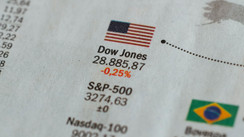Assessing the Core PCE Deflator Data
Last Friday, data disclosed the unexpected drop – a dip not seen in the past four months – in the Core PCE deflator to 3.7% year on year for the month of September. The Federal Reserve took notice of this downturn. Surprisingly, the yearly data contrasted with a 0.3% ascend, the steepest in as many months, in the month-to-month increase of the Core PCE. The Headline PCE remained steady at a year-on-year rate of 3.4%.
Income and Inflation Tendencies
In contrast, both the inflation for services excluding shelter and energy, and inflation for services excluding only shelter, saw a faster growth rate at 0.4%. A surge in energy prices influenced the overall PCE price index, pushing it up by 0.4%.
Examining Inequality in Income and Wage Growth
Personal Consumption marked a 0.7% month-on-month growth, overshadowing a paltry 0.3% rise in income for the same timeline. An intriguing contrast developed as private sector wages plunged to a historic low of 3.9% for February, while government wages rose almost to peak annual trends at 7.8%, narrowly missing the highest record of 8.7% set in October. This led to a decline in the savings rate from 4% to 3.4% of Disposable Personal Income (DPI). This is its fourth successive downward adjustment, regardless of any spurious boosts.
Forecasting Economic Trends
Jerome Powell, Chair of the Federal Reserve, proposed an end to rate hikes in his speech on Friday at the Economic Club of New York, meanwhile leaving room for more increases, determined by risk evaluations and new data. It's expected that the Federal Open Market Committee (FOMC) will keep the key federal funds rate between 5.25% and 5.50%. Despite a strong 4.9% GDP growth in Q3 and an unemployment rate below 4%, plus a flurry of public and consumer spending, the Fed does not anticipate inflation reaching its 2% goal until 2026.





